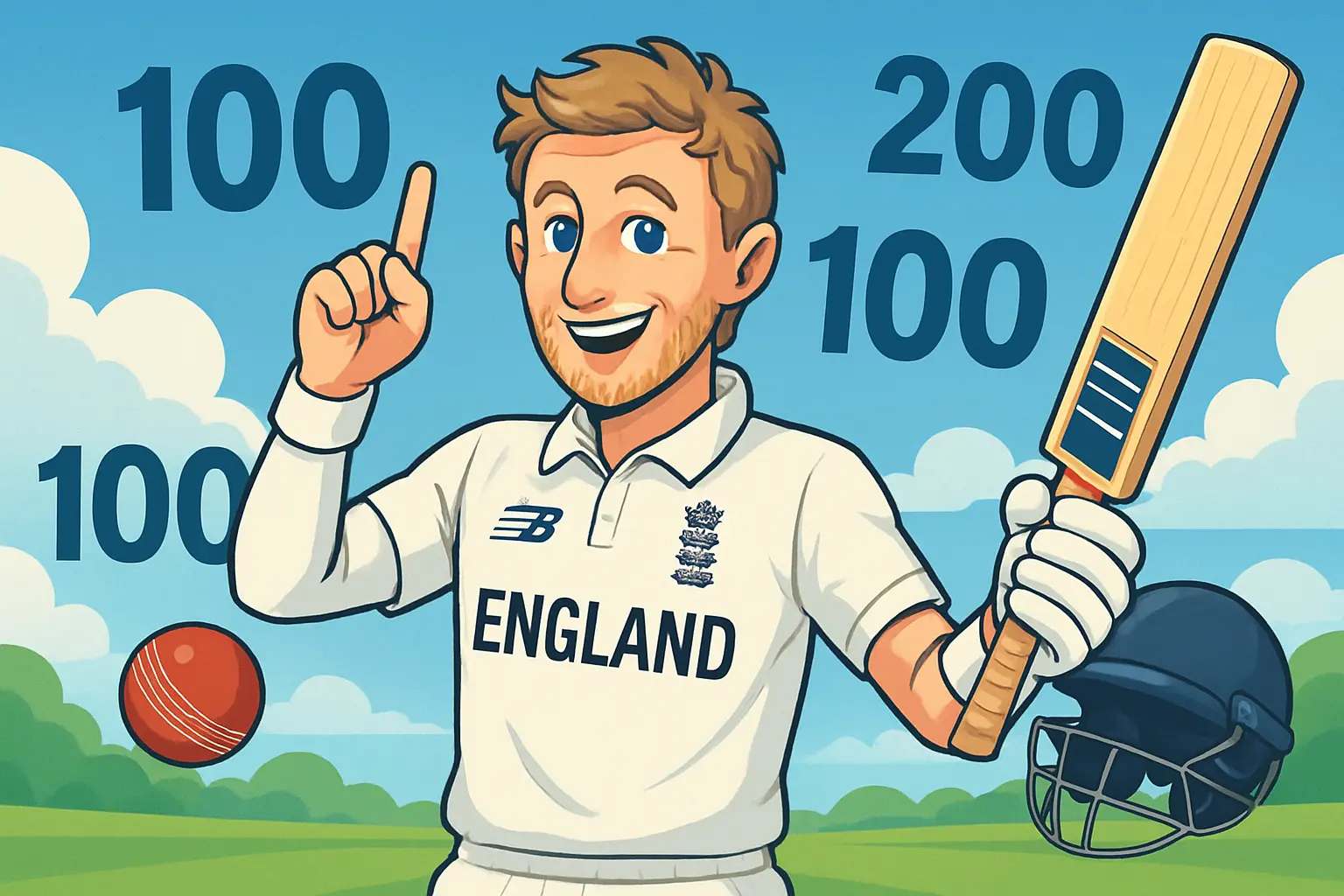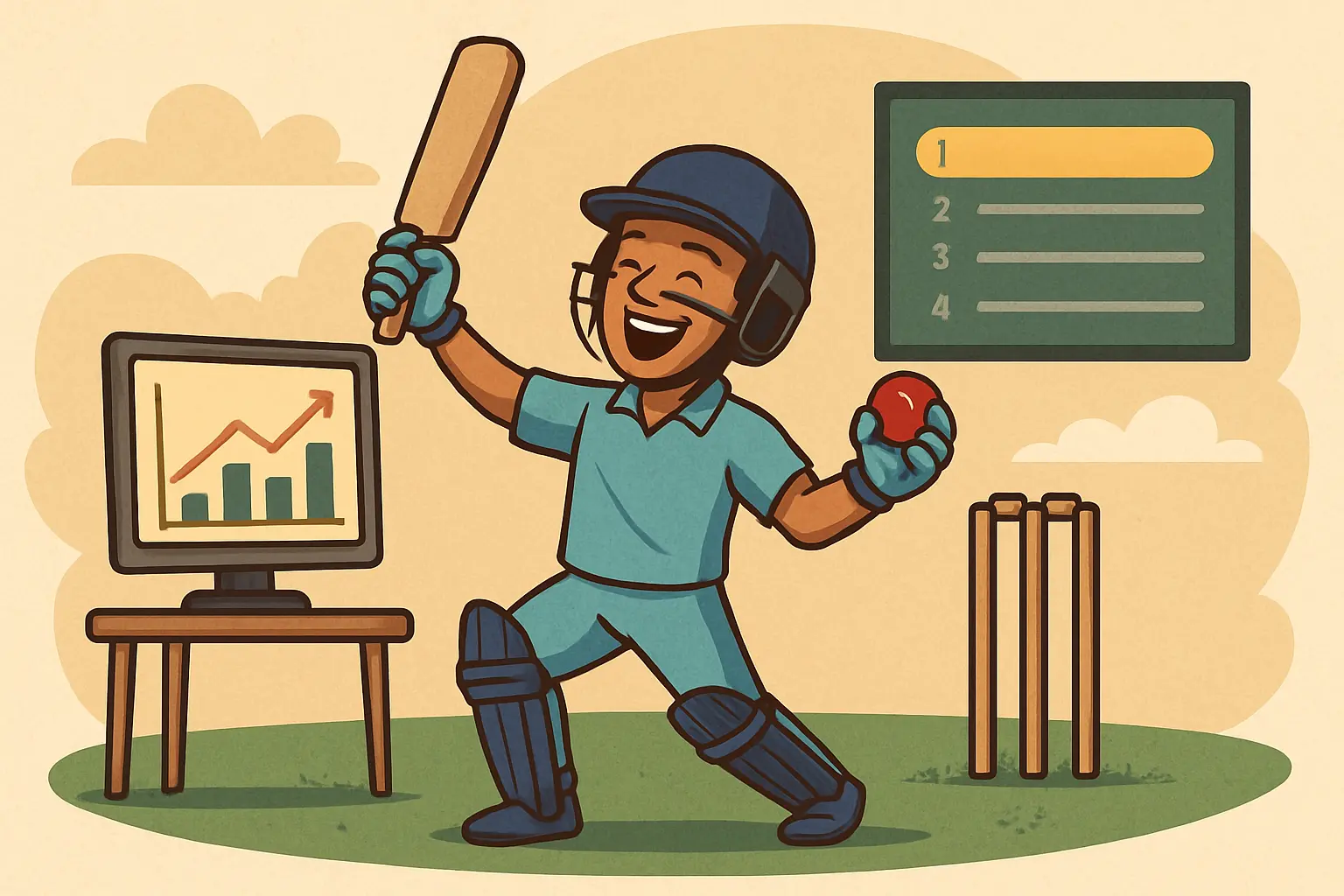
A dead sprint from point. The ball is hardly off the bat when a blur crosses the frame, picks up in one motion, and flicks the stumps down with a snap that stops time. The batter turns, late; the big screen freezes on a stump bent backward and a keeper’s grin widening. That moment is why fielding matters. It changes not just scorelines but moods, momentum, even faith inside a dressing room. The world’s best fielder earns wickets no one else sees, saves runs no one else bothers with, and raises teammates two inches taller just by being there.
This is a ranking built from a lifetime around grounds, analysis rooms, and practice squares. It uses the numbers that matter and the moments that refuse to be reduced to numbers. It’s also segmented for how fans search and argue about greatness: all‑time versus current, by format and league, and by position. If you came here wanting the best fielder in the world, the greatest fielder of all time, or the top slip, ring, and boundary artists, you’ll leave with a clear, defensible answer.
How this ranking works: a transparent, position‑adjusted model
Fielding isn’t one metric. It’s a stack of skills across wildly different jobs: slip, short leg, point, deep midwicket, long‑off. A slip cordon grades differently from a boundary sweeper under lights. Any ranking that ignores positions isn’t serious. Here’s the framework used to score players across eras and formats:
- Catches per innings by position (40%): Raw catch counts are adjusted for fielding position and exposure. A slip fielder in Tests sees more chances than a cover fielder; a deep boundary sweeper in T20s faces a different pattern of high‑difficulty chances. We normalize using expected-chance baselines drawn from ball‑by‑ball logs, with Statsguru and match video as primary inputs.
- Run‑out involvement and direct hits (25%): Assists and direct hits per match, weighted by context (powerplay/death overs or final session), distance, and angle. Direct hits from the ring and from the rope carry extra weight.
- High‑leverage impact (20%): Wickets and saves that objectively swing win probability. Dismissing a top‑order batter early via a catch, or a final over stop on the rope, counts more than a routine chance at 150 for 9.
- Versatility and positional range (15%): Elite fielders can dominate in more than one place. We score how well a player grades in slips, the inner ring, and the deep, across formats.
A longevity filter applies: sustained excellence across a significant body of work. One miracle catch doesn’t make you the best fielder in the world; it makes you someone with a great poster.
Data sources and notes:
- Primary: ESPNcricinfo Statsguru, ICC match reports, wagon wheels, broadcast angle libraries, and analyst-coded notes on catch difficulty and defensive runs saved.
- Secondary signals: CricViz and team analyst insights where available.
- Position tagging is imperfect historically, so narrative judgment is used where video or scorecard detail is thin.
- Records are cited for context, not as the sole determinant.
Scoring weights at a glance
- Catches per innings by position: 40%
- Run‑outs/direct hits: 25%
- High‑leverage plays: 20%
- Versatility/positions: 15%
The greatest fielder of all time: Jonty Rhodes
Pick any frame from Jonty Rhodes at backward point or cover, and the technique blueprint jumps out. Neutral, athletic base. Split step timed to the contact of bat and ball. Hip turn before the foot even plants. Hands soft, eyes low, head tracking through. He anticipates, then hunts, then finishes with an arm path grooved to laser the base of the stumps. The clichés about electricity undersell what was happening: Jonty brought a biomechanical precision to ring fielding that is now a coaching syllabus.
He also broke the game’s rhythm. Batters learned, the hard way, that singles to point were no longer neutral options. A ball tapped square used to be a jog-through; with Jonty it was a 50–50 gamble. That shifted field settings and batting plans in a way no fielder had before. Ask his teammates about how quickly he turned practice into theatre: hundreds of direct‑hit repetitions off one step, flat from side-on, and always with a pre‑throw check of the feet.
In the model above, he grades elite in three quadrants: ring catches and stops, run‑out rate, and high‑leverage value. His versatility score is strong too—though he wasn’t a traditional slip, he could and did move wide, sweep, and guard the rope late. Calling Jonty Rhodes the greatest fielder of all time is not nostalgia; it’s the most consistent answer when you stack method against reality.
Top 25 fielders in cricket history (all‑time)
Below are the all‑time best fielders in cricket history, ranked by the framework above and refined by what hundreds of hours of video and live notes tell you that numbers can’t.
- Jonty Rhodes (South Africa) — Inner ring specialist
Signature: Backward point pickup-and-throw, full‑length dives either side, reflex one‑handers, direct hits from 25–30 meters. Turned ones into zeros and twos into ones. Essential viewing for any coach teaching ring fielding. - Ravindra Jadeja (India) — Inner ring and deep, all formats
Signature: Direct hits from backward point and short cover with minimal backlift; rocket arm at the rope; clean hands across ground balls; springy elevation for high catches. In modern cricket, Jadeja is the best fielder in the world across all three positions, with unmatched consistency. - Ricky Ponting (Australia) — Point/cover and slips
Signature: Bullet flat throws from point, reverse-falling grabs at cover, relentless ground attack in the ring. A captain who fielded like a specialist, he stole singles and created run‑outs other teams did not attempt. - AB de Villiers (South Africa) — Everywhere
Signature: T20 boundary athletics, one‑hand picks and rocket throws at midwicket, full‑stretch catches running backward. The rare player who could keep wicket one day and take a leaping one‑hander on the rope the next. - Mark Waugh (Australia) — Slips
Signature: Low, floating hands with velvet touch at first slip, a master class in balance and reading the seam. To leg‑spin and pace, he stayed quiet and let the ball come, which is an art younger slip fielders rarely master. - Mahela Jayawardene (Sri Lanka) — Slips and ring
Signature: Slip catching off spin at a historic scale, usually to Muralitharan. Anticipation, staying low, index-finger soft hands. In ODIs he also patrolled the ring cleverly, with clever pick-and-flick run‑outs. - Rahul Dravid (India) — Slips
Signature: The Wall with the gloves off at first slip. He reads edges early and moves smoothly without hard hands. The volume of catches isn’t just longevity; it’s technical mastery under high traffic. - Faf du Plessis (South Africa) — Ring and boundary
Signature: Over-the-shoulder grabs, athletic relay catches, and ground coverage that makes captains greedy. Faf’s wrist cock and release yield true lasers to the stumps without visible strain. - Suresh Raina (India) — Inner ring, especially cover
Signature: Hyperactive feet, aggressive first step, instant transfer from gather to throw. For a long stretch he was India’s standard in white-ball ring fielding, with a catalog of dead‑eye direct hits. - David Miller (South Africa) — Boundary specialist
Signature: Spring-loaded verticals, late adjustments in flight, and a knack for the ball sticking one‑handed at full tilt. In T20s, few turn sixes into twos like Miller with relay smarts. - Martin Guptill (New Zealand) — Deep and ring hybrid
Signature: Olympic-javelin arm, exceptional on-the-run grabs, and the most famous direct hit of a knockout match in the modern era. A boundary guard who loves the contest. - Herschelle Gibbs (South Africa) — Point/cover
Signature: Catlike read off the bat, full‑length dives horizontal, clutch low catches inches off the turf. He made backward point a hotspot for highlight reels. - Ben Stokes (England) — Slips and deep
Signature: Freakish arm strength, late leaps that defy the coaching manual, and a taste for the outrageous under pressure. Few mix aura and effect like Stokes. - Andrew Symonds (Australia) — Ring/boundary hybrid
Signature: Broad-shouldered but light across turf, underarm deflections onto stumps, overhand grenades that shocked batters. Underrated hands overhead. - Paul Collingwood (England) — Point and cover
Signature: Clean movement and pre‑movement reads that set up those famous one‑hand plucks. Economy of motion, minimal fuss. - Eknath Solkar (India) — Short leg/silly point
Signature: The bravest seat in the house. He made off‑spinners feel taller with reflex catches inches from the bat. Specialization before it was fashionable. - Ajinkya Rahane (India) — Slips (especially to spin)
Signature: Eliminates hard hands, stays square, and judges low edges beautifully. India’s most reliable modern slip to spin. - Stephen Fleming (New Zealand) — Slips
Signature: Statesman’s hands, textbook side-on posture, and an understanding of angles that saved runs as much as it yielded wickets. - Steve Smith (Australia) — Slips/leg slip
Signature: Magnetic hands in the cordon, especially to seamers. Anticipation that borders on clairvoyance with late movement. - Kane Williamson (New Zealand) — Slips and ring
Signature: Quiet hands and perfect head position. He’s never in a rush, which is why the ball loves him. - Glenn Maxwell (Australia) — Ring and deep
Signature: Express throws from awkward platforms, reverse flicks, and boundary line awareness that makes impossible saves feel routine. - Kieron Pollard (West Indies) — Boundary specialist
Signature: One‑handed parries and returns from beyond the cushions, arm reach that redefines verticals, and relay catches that coaches use as demo clips. - Tillakaratne Dilshan (Sri Lanka) — Ring and short positions
Signature: Quick-silver reads, outrageous pick-up-and-throw sequences, and absolute commitment to the first step. - Shoaib Malik (Pakistan) — Ring and deep
Signature: Dependable hands, calm under high balls, and very accurate throws. A white‑ball constant. - Mohammad Kaif (India) — Ring
Signature: Early exemplar for India’s modern fielding revolution, with light feet, exact throws, and that sixth sense for sharp singles.
Narrative notes on the all‑time list
- Slips matter. Test cricket lives on edges, and nobody defined the cordon better than Mark Waugh, Rahul Dravid, Mahela Jayawardene, and Steve Smith. Their catching percentages against expected chance are astonishing even without exact counts.
- The ring is a craft on its own. Jonty Rhodes, Jadeja, Ponting, Raina, Collingwood, and Dilshan altered batter behavior. Run‑out threat from the inner ring is an actual deterrent you can measure in attempted singles.
- Boundary athletes changed T20. David Miller, Kieron Pollard, Glenn Maxwell, Faf du Plessis, and Martin Guptill normalized relay catches and balance recovery steps that once looked like circus acts. Coaches now train the dip‑and‑parry technique as standard.
- Short leg deserves a medal. Eknath Solkar stands here for all the brave souls wearing a helmet at three meters. Reflexes, courage, and a different line of sight entirely.
The current best fielders in the world
The modern game asks a fielder to cover more ground in higher‑leverage segments than ever. Powerplays compress time, death overs enlarge the boundary, and batters reverse more than bowlers plan. In this environment, the current top 10 fielders blend speed, game intelligence, and specialist skill.
- Ravindra Jadeja — Best fielder in the world right now. First step unmatched, throw mechanics efficient from any body position, and he still finds new ways to steal runs.
- David Miller — Outfield execution master. Air sense, timing, and calm hands when the ball wobbles late.
- Glenn Phillips — New Zealand’s livewire. A ring/boundary hybrid with outrageous verticals and relentless chase speed.
- Faf du Plessis — Coordination beast; seems to hang in the air. Extraordinary relay partner and a captain’s dream at long‑on/long‑off.
- Ben Stokes — More slip‑focused lately, but still a magnet. His infield throws remain weapons.
- Glenn Maxwell — Throws kill singles, his feet reset on awkward angles quickly, and he’s strong on the rope under pressure.
- Shadab Khan — Elite ring work, especially at cover/point. Direct hits are a clear strength.
- Axar Patel — Long levers, safe high hands, and clean ground technique. Supremely tidy.
- Steve Smith — Slips are his territory; batters know every edge is a coin toss against him.
- Hardik Pandya — Explosive sprinter to the ball with a cannon arm and ice-cold decision‑making late in the innings.
Best by format: Tests, ODIs, and T20Is
Best fielder in Test cricket
- Slip and short‑leg skills dominate. Tests produce more cordon chances; close‑in reflex catching off spinners is its own science.
- All‑time slip essentials: Mark Waugh, Rahul Dravid, Mahela Jayawardene, Steve Smith, Jacques Kallis (noted for volume and surety), and Stephen Fleming.
- Close‑in artistry: Eknath Solkar for short leg. Ajinkya Rahane for slips to spin, where India historically struggled until his rise.
- Current standouts: Steve Smith and Joe Root in the slips, Marnus Labuschagne around the bat, and Ajinkya Rahane whenever he’s in the cordon.
Best ODI fielders
- Inner ring control and fast outfield recovery matter most.
- All‑time: Jonty Rhodes, Ricky Ponting, Ravindra Jadeja, Suresh Raina, AB de Villiers, and Tillakaratne Dilshan. Add Paul Collingwood for his knack of changing games with one movement.
- Current: Jadeja remains the benchmark; Glenn Phillips, Shadab Khan, and Axar Patel run rings around batters; David Miller dominates high catches in the deep.
Best T20 fielders
- Boundary discipline and parry‑and‑pullback techniques define the format.
- All‑time: Kieron Pollard, David Miller, Faf du Plessis, AB de Villiers, Glenn Maxwell, and Martin Guptill. These names appear in every coach’s film session on rope work.
- Current: David Miller, Faf du Plessis, Glenn Phillips, Glenn Maxwell, and Tim David (rope balance and long levers) headline a list shaped by specialist training.
Best fielders by position
The best slip fielders of all time
- Mark Waugh: The smoothest hands and best weight transfer. He made the position look slow motion.
- Rahul Dravid: Flawless technique and concentration; rarely beaten by wobble.
- Mahela Jayawardene: Slippery edges to spin suited his game sense and hand softness.
- Steve Smith: Completes hard takes at chest and ankle height equally well.
- Jacques Kallis: Sometimes overlooked, but remarkably safe over a long career.
What separates elite slips:
- Eye‑head stability and soft hands. You don’t chase the ball; you let it come.
- Footwork micro-movements keyed to the seam and bat face.
- Positional discipline by bowler plan: half‑step in to wrist-spin, and slightly wider to angle across right-handers.
The best inner‑ring fielders
- Jonty Rhodes: The template at backward point.
- Ravindra Jadeja: The current standard at point/cover, and a rocket arm from any angle.
- Ricky Ponting: Reduced singles to a rumor when he stood at point in his prime.
- Suresh Raina: A direct‑hit magnet; reading singles as they’re forming.
- Tillakaratne Dilshan: Hyper‑quick feet and clever pick-ups, strong at underarm hits.
Inner‑ring keys:
- Split step at contact, not at release; the difference between a save and a chase.
- Hands below the ball early; eyes level through the scoop.
- Throw mechanics: hips and shoulders square early, quick external rotation, and follow-through at stump height.
The best boundary fielders
- Kieron Pollard: Parry‑and‑regrab master, turns sixes into breathtaking denials.
- David Miller: Combines footwork smarts with strong hands and fearless leaps.
- Faf du Plessis: Elegant, balanced, and aware of teammates for relay chances.
- Glenn Maxwell: Explosive first two steps and inventive parries.
- Martin Guptill: Reads trajectory brilliantly and owns the long throw.
Boundary keys:
- Pre‑jump calculation: catch zone relative to rope, angle of drift, and partner position.
- The drop‑step and balance save: plant outside foot, parry with soft hands, re‑establish inside field before the catch.
- Throw choice: bounce throw for distance control versus flat throw for speed. The best mix both by read, not habit.
Best fielders in IPL history
League cricket magnifies fielding. Tight chases are decided by a fingertip, and seasons swing on net run rate saved at the rope. The best fielders in IPL history mix volume with viral‑level moments.
- Suresh Raina: A pioneer of sustained excellence in the ring with a mountain of catches as a fielder. He patrolled cover like a full‑time job, pulled off hard running catches, and stitched together run‑outs by sheer pressure.
- AB de Villiers: Rope artistry and ring brilliance. He did everything: toe‑ending tumbling catches, relay smarts with Faf, and bullet throws off awkward pickups.
- Ravindra Jadeja: If there’s a white‑ball fielding hall of fame, Jadeja’s first ballot. Direct hits and rope work win tight games. His on‑the-angle release is a franchise’s best last‑over friend.
- Kieron Pollard: The single player most referenced in relay‑catch tutorials. His one‑handed parries have changed outcomes and inspired a generation to practice balance saves.
- Faf du Plessis: Safe hands under lights and wind; reads launch off the bat, not the crowd. He and AB together made long‑on and long‑off feel like trapdoors.
- Virat Kohli: In the ring, he set standards for fitness and attitude. Clean technique, sharp throws, safe under pressure high balls.
- Rohit Sharma: Underrated outfield catching and smart angles in the ring; strong low catches at short midwicket.
- David Miller: Rope surety and clutch factor. He often takes the hardest chance and makes it look pre‑planned.
- Rahul Tewatia: Nose for angles and timing in the deep; presence in pivotal phases.
- Hardik Pandya: Agile in the ring, heavy arm, and leadership presence that lifts intensity.
Most catches as a fielder in IPL seasons and across the league tend to feature names like Raina, Kohli, Pollard, AB de Villiers, Rohit Sharma, and Faf du Plessis at or near the top. Exact numbers can shift as active players add to their tally, but the order of magnitude—and the impact—is consistent.
Best fielders by country
India
- Ravindra Jadeja (benchmark now)
- Suresh Raina (ring pioneer)
- Rahul Dravid (slips)
- Ajinkya Rahane (slips to spin)
- Virat Kohli (ring/outfield)
- Mohammad Kaif (early modern standard)
- Yuvraj Singh in his prime (cover/point)
Australia
- Ricky Ponting
- Mark Waugh
- Andrew Symonds
- Steve Smith
- Glenn Maxwell
- David Warner (ring/boundary energy)
South Africa
- Jonty Rhodes
- AB de Villiers
- Faf du Plessis
- Herschelle Gibbs
- David Miller
England
- Ben Stokes
- Paul Collingwood
- Joe Root (slips)
- Eoin Morgan (ring)
- Jason Roy (boundary judge)
New Zealand
- Martin Guptill
- Kane Williamson
- Stephen Fleming
- Trent Boult (rope hands, yes he’s a bowler, but that doesn’t disqualify the fielding)
Pakistan
- Shoaib Malik
- Shadab Khan
- Shahid Afridi (ring intensity)
- Babar Azam (slips/ring)
Sri Lanka
- Mahela Jayawardene
- Tillakaratne Dilshan
- Kumar Sangakkara as a non‑keeping fielder occasionally in ODIs
- Chamara Kapugedera (rope)
Bangladesh
- Mahmudullah (dependable under the high ball)
- Shakib Al Hasan (ring intelligence)
- Litton Das (athletic outfield when not keeping)
West Indies
- Kieron Pollard
- Dwayne Bravo (ring ambush and accurate throws)
- Nicholas Pooran when in the outfield
- Jason Holder (wingspan on the rope)
Afghanistan
- Rashid Khan (ring and boundary anticipation)
- Najibullah Zadran (strong hands)
- Rahmat Shah (tidy ring work)
Records snapshot and how to read them
Pure records are blunt tools for judging the best fielder in cricket, but they help set context.
- Most catches by a fielder in Tests: Rahul Dravid sits atop the list, with Mahela Jayawardene and Jacques Kallis close behind. This maps to their long, slip-heavy roles and exceptional technique.
- Most catches by a fielder in ODIs: Mahela Jayawardene is the leader, a product of longevity plus slip excellence and shrewd ring work.
- Most catches by a fielder in T20Is: The leaderboard has featured names like David Miller, Martin Guptill, Shoaib Malik, and Rohit Sharma. High-variance format, high sample noise, but outfielders with good hands and many games will rise.
- Most catches as a fielder in IPL: Suresh Raina, Virat Kohli, and Kieron Pollard are frequent leaders, with AB de Villiers and Rohit Sharma strongly placed. The exact order can shuffle as active players stack seasons.
How to read these:
- Role matters. Slip fielders accumulate volume in Tests; boundary specialists top T20I charts.
- Era matters. More cricket and more white-ball games amplify the counting stats.
- Difficulty isn’t captured. A sitter and a full‑length dive count the same in raw numbers; that’s why we use position-adjusted and impact-based weighting.
What makes an elite fielder: the toolkit
- First step and split step: The best fielders time their split step to bat‑ball contact, not bowler release. That half-beat sync gives you a read on line and speed.
- Eye height and head stillness: Whether it’s a ground ball or a catch, head over the ball and eyes level reduce last‑meter errors.
- Hand shape and softness: For low catches, fingers point down; for slips, hands float and absorb. Hard hands spill.
- Throw mechanics: Hips lead, then shoulders, then forearm snap. The fastest arms are efficient from odd platforms: one knee down, side-on, in reverse.
- Boundary craft: Know your space. Practice the parry-then-regrab with soft hands and a legal re-entry. Learn the drop-step to rescue balance inches from the rope.
- Communication and calling: Two fielders, one high ball, no collisions. Elite units are noisy and clear.
- Pre‑ball plans: Fielding is not reactive alone; the best plan for batters’ preferred angles, the bowler’s pace/length, and wind.
- Reps and routine: Volume matters—but quality is the ceiling. Do the hard catches tired. Throw at a single stump from wide angles. Practice one-step releases because match pressure steals time.
Quick answers to popular questions
Who is the best fielder in the world in cricket right now?
Ravindra Jadeja. He combines ring dominance, rope excellence, and a direct‑hit frequency that breaks games open.
Is Jonty Rhodes the greatest fielder of all time?
Yes by this model, and intuitively by any coach who values inner‑ring impact. Others have higher catch totals in slips, but no one altered batting patterns in the ring the way Jonty did.
Who has the most catches as a fielder in Tests, ODIs, and T20Is?
Tests: Rahul Dravid leads, with Mahela Jayawardene close behind.
ODIs: Mahela Jayawardene tops the list.
T20Is: Leaders have included David Miller, Martin Guptill, Shoaib Malik, and Rohit Sharma depending on updates.
Who is the best fielder in IPL history?
The podium depends on how you value volume versus impact. Suresh Raina leads or is near the top on pure catches and ring work; AB de Villiers is the artist with game-changing rope moments; Ravindra Jadeja’s direct hits and clutch saves claim the impact crown. If asked for one name, Raina for volume or Jadeja for total package.
Which position is the hardest to field in cricket?
Short leg for courage and reflex risk; slip to spin for technical difficulty; and the boundary under lights at long‑on/long‑off for judgment and pressure. Different hard for different skills.
Who is India’s best fielder currently?
Ravindra Jadeja, with Axar Patel and Virat Kohli significant contributors in their roles.
Jadeja vs Raina: who is better in fielding?
Raina was the ring’s relentless enforcer and a run‑out generator. Jadeja is that plus elite rope work and a stronger arm. Jadeja edges it overall.
What is a good catching success rate in cricket?
For international pros, a good slip catching percentage sits around the mid‑80s across a season; ring catches should be higher. High outfield chances in T20s are inherently lower percentage; a true elite will convert a meaningful share of the 50–60% difficulty bracket and almost never drop the routine.
The case files: why each of these fielders changes games
Ravindra Jadeja
- Technique: Low center of gravity, crisp transfer from gather to release, keeps the ball in front of him on ground takes. Left‑arm throw creates tricky angles for right-hand batters diving back.
- Tells: Reads backlift early, particularly the cut and back‑foot punch, and starts moving as bat meets ball.
- Impact: Direct hits at a rate that forces teams to rethink tight singles to point. On the rope, he takes high balls without drama and shapes throw choice by situation—flat for time, bouncer for control.
Ricky Ponting
- Technique: At point, he set weight on the inside foot, committing to his first move with zero delay. Throw release near the ear, minimal loop.
- Impact: His presence at point shut down the cut shot for entire series. He also turned half‑chances into assists with mid‑air flicks on the ground ball.
AB de Villiers
- Technique: A multi‑sport mover. Reads ball flight early and adjusts stride to hit the take point with balance. Under‑arm and over‑arm throws equally venomous.
- Impact: As a boundary guard, he created highlight catches and saved returns with soft hands that tape back up rarely show in full value.
Mark Waugh and Rahul Dravid
- Technique: Both teach by posture. Hands low, palms soft, no snatching. Neither chased widths early; both judged late movement like they were reading print.
- Impact: Brought calm to the cordon; bowlers bowled fuller knowing edges would stick.
Faf du Plessis
- Technique: Long strides settle into soft last steps; aligns chest to ball early for vertical jumps.
- Impact: Perfect relay partner; knows when to hold and when to tap for a teammate.
Suresh Raina
- Technique: Almost always on the balls of his feet with a micro-bounce at contact. Under‑arm whip deadly within the circle.
- Impact: Made batters look for alternatives to single‑and-a-jog cricket in the middle overs.
Martin Guptill
- Technique: Reads bat face fast, then gets up to speed smoothly. Arm like a javelin; bounce throw accuracy elite.
- Impact: Momentum-swinging run‑outs from angles others wouldn’t try.
David Miller and Kieron Pollard
- Technique: Body control at the rope. Worry less about raw vertical; their strength is timing and soft hands on contact near the boundary. Parry decisions made early, not mid‑air.
- Impact: The outer circle has become a chessboard, and they sit three moves ahead.
How captains use elite fielders
- Protect your strike bowlers: Anchor your best slip next to your best bowler. Dravid beside Kumble. Jayawardene beside Murali. Smith beside Cummins or Starc. That partnership is a wicket factory.
- Trap shots in the ring: Fielders like Jadeja and Rhodes turn flows of singles off good‑length bowling into dot‑ball pressure. Set them at point/cover for right-handers, rotate angle for left-handers to close their strong cuts.
- Own the arc: Faf or Miller at long‑on or long‑off in death overs preserves bowling plans. Captains place their rope artists where batters target most based on matchup.
- Public messaging: When your best fielder hits the turf in the first over, everybody follows. Fielding intensity is contagious when your alpha leads it.
Training takeaways from the greats
- Jonty’s one‑step direct hits: Set up cones at 20–30 meters, practice pick‑up to release in one step, stumps as target, 50 reps each side. Track misses. Fatigue matters—do it near the end of session.
- Slip rhythm like Mark Waugh: Soft hands, low stance, one‑hand cushion drills with a tennis ball, then progress to cricket balls. Focus on eyes staying down through catch.
- Rope parry like Pollard/Miller: Mark the boundary, rehearse take-push-re‑enter-catch slowly, then at pace. Emphasize soft first contact and quick body re‑entry before secure catch.
- Ring movement like Jadeja: Work on split‑step timing with a coach feeding random tosses. The cue is bat‑ball contact sound, not the bowler’s arm.
- Throwing accuracy: Bounce‑throw to the keeper from 40–60 meters for control; flat throw practice from 20–30 meters for speed. Measure the stopwatch and stumps hit rate.
Short, clear answers for search intent
World best fielder: Jonty Rhodes all‑time; Ravindra Jadeja current.
Best fielders in cricket history: Rhodes, Jadeja, Ponting, AB de Villiers, Mark Waugh, Mahela Jayawardene, Rahul Dravid, Faf du Plessis, Suresh Raina, David Miller top the mix.
Top 10 fielders in the world: See the all‑time list above; for current, Jadeja, Miller, Phillips, Faf, Stokes, Maxwell, Shadab, Axar, Smith, Hardik.
Best slip fielder: Mark Waugh and Rahul Dravid are the masterclass; Steve Smith for today.
Best boundary fielder: Kieron Pollard for technique; David Miller for conversion rate; Faf for completeness.
Best inner‑ring fielder: Jonty Rhodes historically; Ravindra Jadeja now.
A note on numbers, eras, and fairness
Fielding data is better now than it has ever been, but it’s still a blend of record and reading. Slips in Test cricket have more chances than cover fielders; T20 boundary fielders face higher difficulty per chance than slip fielders. Some teams tag positions meticulously; others don’t. That is why the model leans on position-adjusted rates, leverage, and versatility, and why the narrative context is not just seasoning—it’s essential.
Final word
Great fielding has its own sound: the heavy thud of ball into palms, the clean crack of stump against stump, the crowd’s inhale before noise. It has its own psychology: batters second-guess singles; bowlers dare fuller lines; captains breathe easier. The best fielder in cricket does more than complete the highlight reel. He or she alters the geometry of a match.
Jonty Rhodes stands as the greatest fielder of all time because he redefined what the inner ring could be. Ravindra Jadeja stands as the best fielder in the world right now because he rules the ring and the rope, and because his throws are a promise. Behind them, a proud line of slips, ring artists, and rope acrobats show that fielding is both a science you can train and an art you feel in your bones.
The next time a single becomes a wicket from nowhere, remember: not all runs are scored with a bat, and not all wickets belong to bowlers. Fielding is the heartbeat you feel only when it skips—and the best fielders make it race on cue.






